What is the triquetra, and what does it represent? This ancient Celtic symbol, characterized by three interlaced arcs, holds a spectrum of meanings from unity and eternity to the mystical ‘power of three’ revered across various cultures. With roots extending beyond Christianity, the triquetra continues to signify strength, connection, and continuity, transcending time and tradition. Discover its significance and enduring appeal as we delve into the enigmatic world of the triquetra.
Key Takeaways
The triquetra is an ancient Celtic symbol representing various trinities, such as body, mind, and spirit, and carries significance across multiple cultures and religions including Paganism, Wicca, and Christianity.
The symbol’s meaning has evolved over time, initially symbolizing concepts like strength, love, and unity in pre-Christian cultures, and later being adapted as a representation of the Holy Trinity in Christian art and belief.
The triquetra has seen a modern revival and is widely featured in contemporary art forms such as tattoos and jewelry, symbolizing personal beliefs, cultural heritage, and its historical values of power, unity, and eternity.
The Essence of the Triquetra
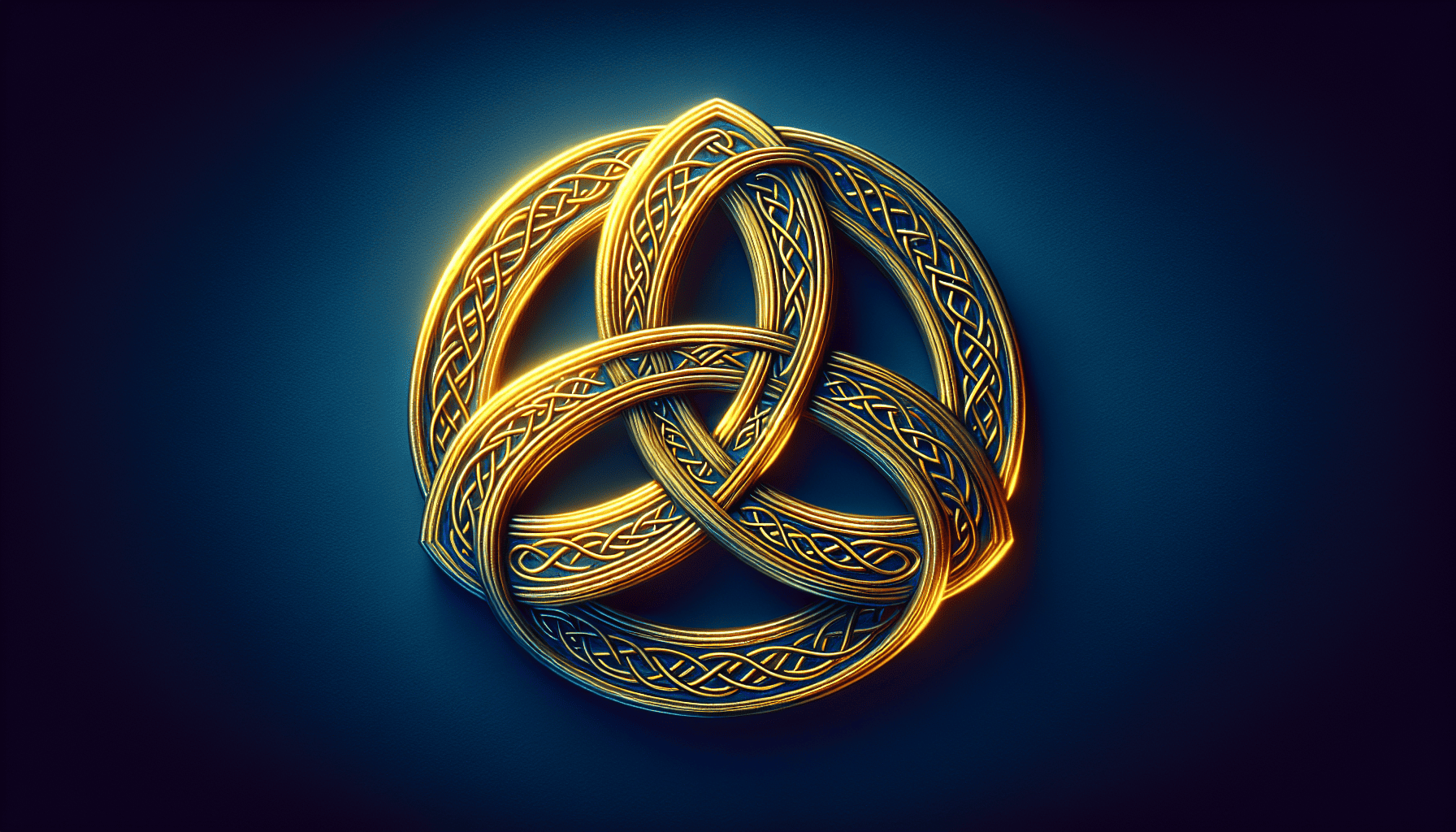
The triquetra is an ancient Celtic symbol that has captivated people for centuries. It is composed of three interlaced arcs, forming a design that is both simple and complex at the same time. But the triquetra is more than just a pretty design. It carries a profound symbolic significance, representing unity, protection, and eternity. The three interlaced arcs represent the interconnectedness of body, mind, and spirit, symbolizing an unbroken and eternal line. In Celtic culture, it can also represent strength and love.
Exploring the triquetra further, we come across the notable importance of the number three. The power of three is a concept that is deeply rooted in many cultures and religions, and the triquetra is a powerful representation of this concept.
The Power of Three
The triquetra embodies the potency of three, illustrating diverse tri-cornered shapes and the life cycle encompassing birth, life, and death. The number three holds great significance in many cultures, often symbolizing unity, balance, and the cycle of life. In Celtic cultures, the triquetra was used to symbolize love, honor, and protection, while in Norse culture, the triquetra norse denoted the interconnectivity and balance of all things, particularly the unity of the three realms.
Instances of the ‘power of three’ concept can be found in mythology and religion as well. The Greek Moirai, the Charities, and triple deities all symbolize the notion of three entities operating as a unified entity, which is reflected in the design of the triquetra.
Names and Terminology
The triquetra is known by a multitude of names, each bearing its distinct significance. It is also referred to as:
the trinity knot
the Celtic trinity knot
the Holy Trinity
Musubi Mitsugashiwa (in the Buddhist tradition)
The term ‘Trinity Knot’ symbolizes the unity of body, mind, and spirit, and the concept of the power of three and the Holy Trinity in Christianity. The trinity knot meaning, also known as the Celtic Triangle or the trinity knot symbol, is derived from the term ‘Triquetra’ which represents a shape formed of three vesicae piscium, sometimes with an additional circle, symbolizing things or persons that are threefold. This meaning is particularly significant during the Celtic revival in the 19th century, and understanding trinity knot meanings can provide deeper insight into the symbol’s significance, often referred to as the trinity symbol.
Tracing the Triquetra’s Origins
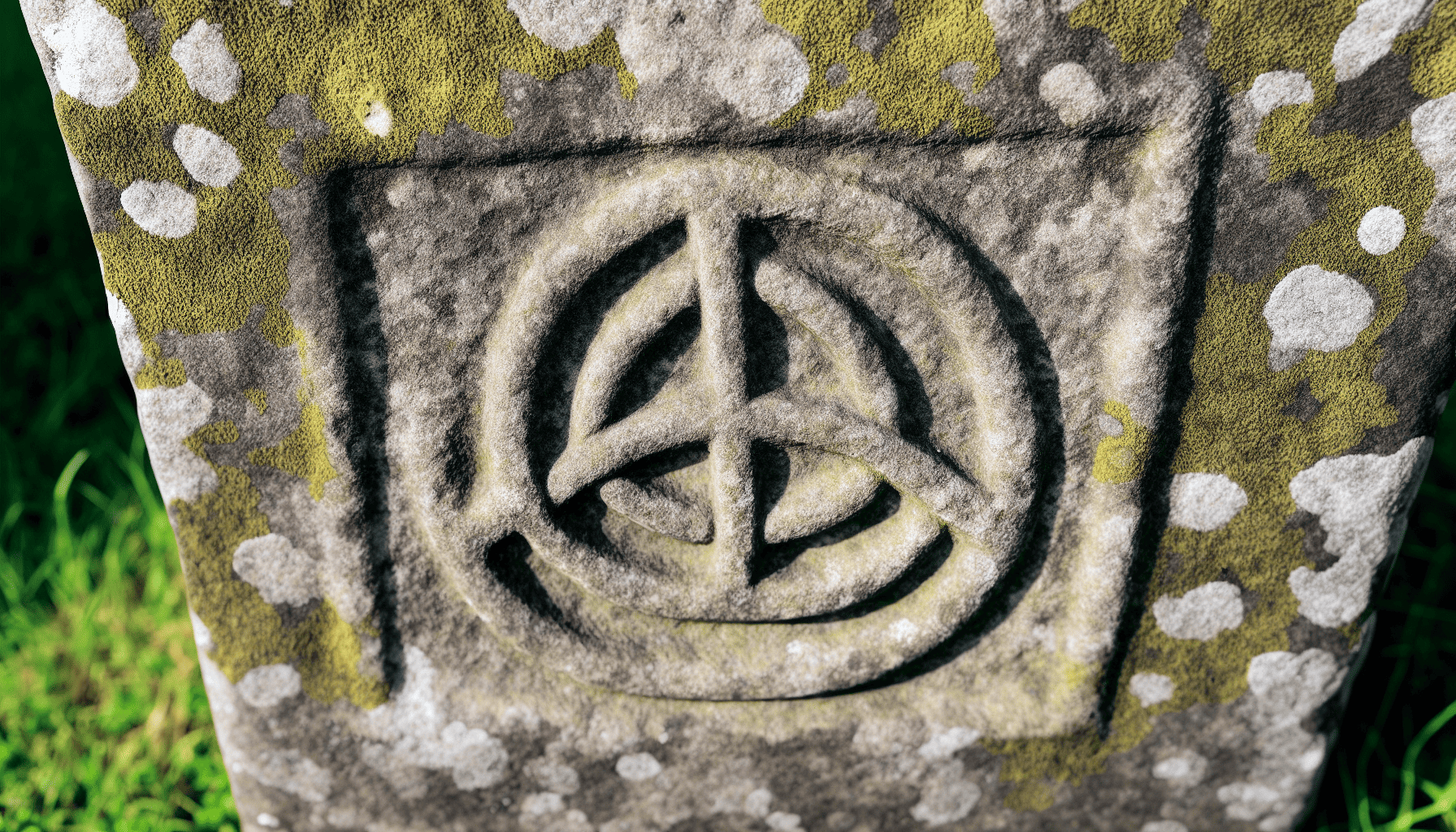
The triquetra’s roots extend back to the era before Christianity. This ancient symbol was employed by ancient Celts before the advent of Christianity, symbolizing various concepts that remain somewhat ambiguous. However, the symbolism of the triquetra evolved and diversified as it was adopted and adapted by different cultures and religions.
Pre-Christian Beginnings
The triquetra symbol was utilized in Celtic cultures to symbolize love, honor, and protection. In Norse culture, it denoted the interconnectivity and balance of all things, particularly the unity of the three realms. This symbol of interconnectedness and unity was a common theme in pre-Christian cultures, underlying the symbol’s depiction of unity and balance.
While the exact origins of the triquetra remain a mystery, it is clear that its significance predates the Christian era. This is evident in the use of the triquetra in various ancient artifacts, stone carvings, and early Germanic coins, among others.
Christian Adaptation
Christianity first adopted the triquetra in the 9th century, evident in the Book of Kells. It points to its use as a symbol for the Holy Trinity in European Christian culture. In Christian theology, the triquetra symbolizes the Holy Trinity, representing the Father, the Son, and the Holy Spirit, encapsulating the belief in One God revealed in three persons.
The triquetra, also referred to as the Celtic Trinity Knot, holds considerable importance in Irish and Scottish Christian art, particularly since the Celtic revival of the 19th century. The Celtic trinity knot meaning is deeply rooted in its symbolic representation of the Holy Trinity.
Triquetra Symbolism Across Cultures
The triquetra symbol has been embraced by various cultures and religions, each with its unique interpretation and significance. Some of these include:
In Celtic culture, it is seen as a symbol of unity and protection.
In Norse tradition, it represents the power of three.
In Christianity, it symbolizes the Holy Trinity.
The triquetra holds a profound meaning across cultures and is not confined by geography or time.
Pagan and Wiccan Connections
In Pagan and Wiccan traditions, the triquetra holds a special place. It is seen as a symbol of the interconnectedness of natural forces and the cycle of life. In Wiccan beliefs, the triquetra represents concepts such as past, present, and future; body, mind, and soul; or the Celtic perspective of land, sea, and sky. Additionally, it is viewed as a protective symbol.
The significance of the triquetra extends to the celebration of the three stages of womanhood. In Pagan and Wiccan beliefs, the triquetra represents the maiden, symbolizing purity and youth, the mother, denoting fertility and stability, and the crone, symbolizing wisdom and repose. It also symbolizes the cycle of life through its representation of the three realms of earth, sea, and sky, or alternatively, the flowing of time through past, present, and future.
Christian Significance
While the triquetra predates Christianity, it has been wholeheartedly embraced by this faith. The triquetra holds significance in Christianity as it symbolizes the Holy Trinity, representing the concept of one God in three persons. This meaning was carried forward from the early Christian era, particularly since the Celtic revival of the 19th century.
The triquetra is also a popular design in Christian art and architecture. Its three interlaced arcs, often enclosed by a circle, are a symbol of the Holy Trinity, signifying the unity of the Father, the Son, and the Holy Spirit. Today, the triquetra continues to be used in Christian art and is often seen in churches and other places of worship.
The Modern Revival of the Triquetra
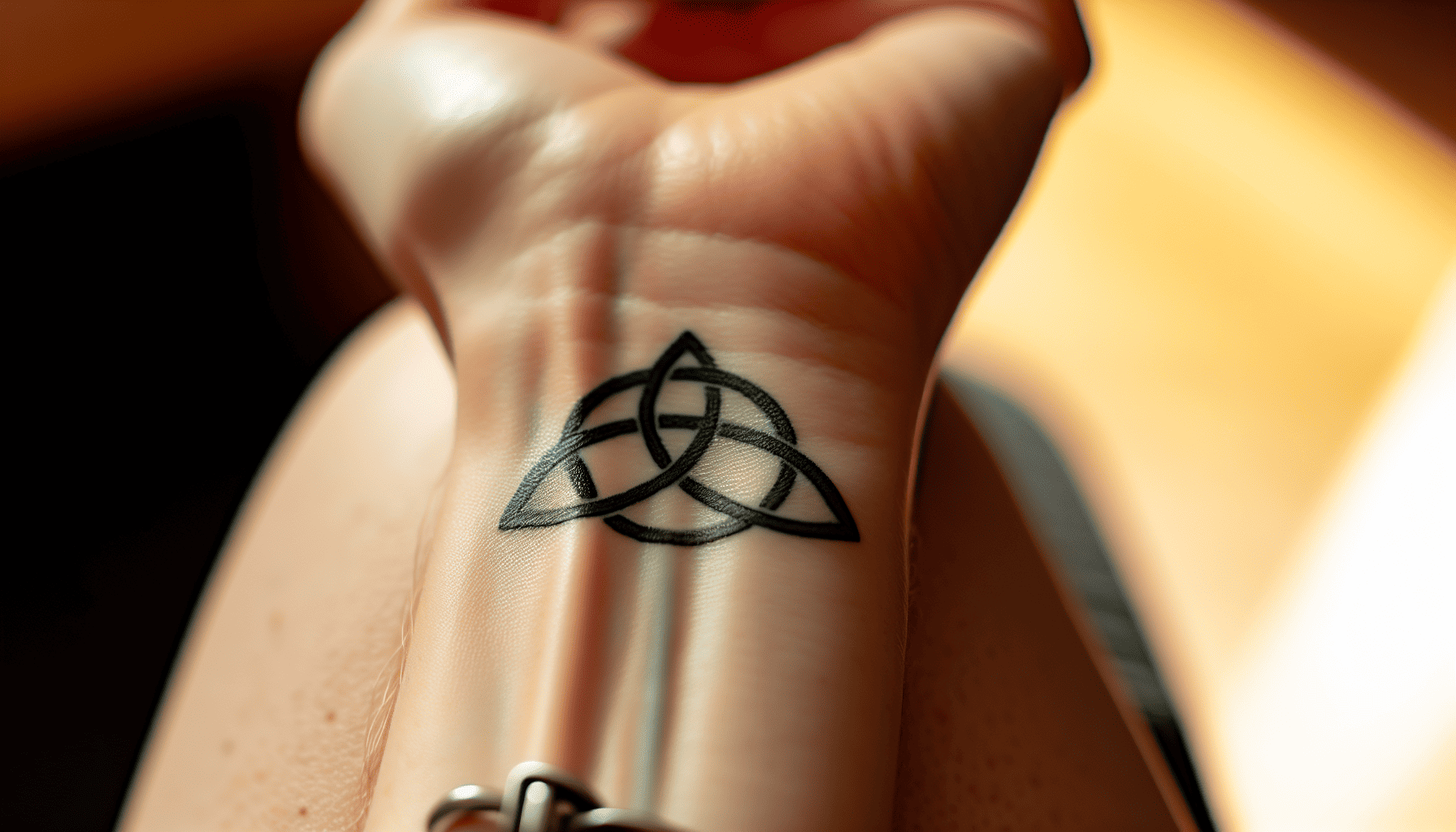
The triquetra is not just a symbol of the past. It has experienced a modern revival, becoming increasingly popular in the 21st century. This ancient symbol is now frequently seen in tattoos, body art, and jewelry, continuing to represent power, unity, and eternity.
Whether it’s a tattoo that signifies a personal belief or a piece of jewelry that carries a cultural heritage, the triquetra remains a captivating symbol in contemporary society.
Tattoos and Body Art
Many opt for the triquetra in tattoos, as it signifies a spectrum of individual beliefs and values. For some, it is a symbol of their religious beliefs, such as Christianity, Buddhism, Hinduism, Wiccan, or any Pagan religion. For others, it represents the concept of a trinity, unity, connections, and personal faith.
The designs of triquetra tattoos are as diverse as the people who wear them. Some tattoos feature the traditional triquetra symbol, while others integrate the triquetra with other elements, often enclosed within a circle to underscore the theme of eternity. Regardless of the design, triquetra tattoos are a powerful way to express personal beliefs, heritage, or simply an appreciation for the symbol’s aesthetic appeal.
Jewelry and Accessories
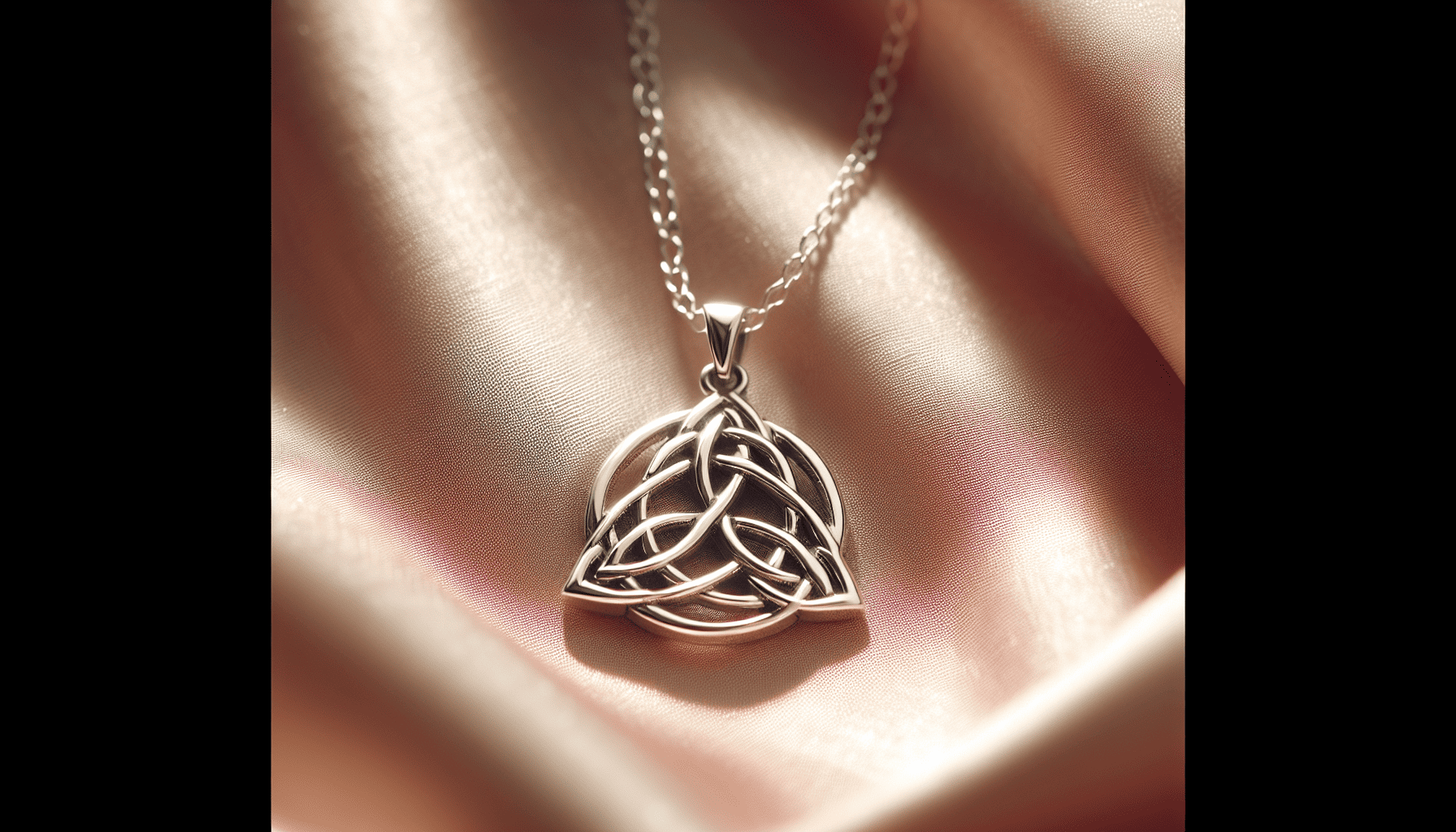
Beyond tattoos, the triquetra is a favored design in jewelry and accessories. It can be found in various types of jewelry, such as:
pendants
earrings
rings
bracelets
These items are typically made from materials such as sterling silver, gold plating, stainless steel, and titanium.
The design of trinity knot jewelry symbolizes unity, protection, and eternity by representing the Holy Trinity in Christianity and the three elements of nature in Celtic art and jewelry. Whether it’s a triquetra pendant worn as a symbol of faith, a ring that symbolizes eternal love, or a bracelet that serves as a protective amulet, trinity knot jewelry carries a deep meaning that resonates with many people.
The Art and Craft of Celtic Knotwork
The art of Celtic knotwork, including the triquetra, the Celtic knot, and the Celtic love knot, is a fascinating and intricate craft with deep cultural significance. Originating from the Celtic civilization, this art form is deeply intertwined with their cultural and spiritual traditions. The use of interlace patterns, such as celtic knots, can be historically traced back to the late Roman Empire, where knot patterns began to emerge in the third and fourth centuries AD. The Celts incorporated and adapted these knots into intricate knotwork designs, creating a unique art form that continues to captivate people today.
The creation of a triquetra demands a complicated process necessitating accuracy and skill. Each triquetra is created by weaving a single, continuous line into a three-pointed, interlaced design. This process symbolizes eternity and interconnectedness, reflecting the deep meanings associated with the triquetra.
Creating a Triquetra
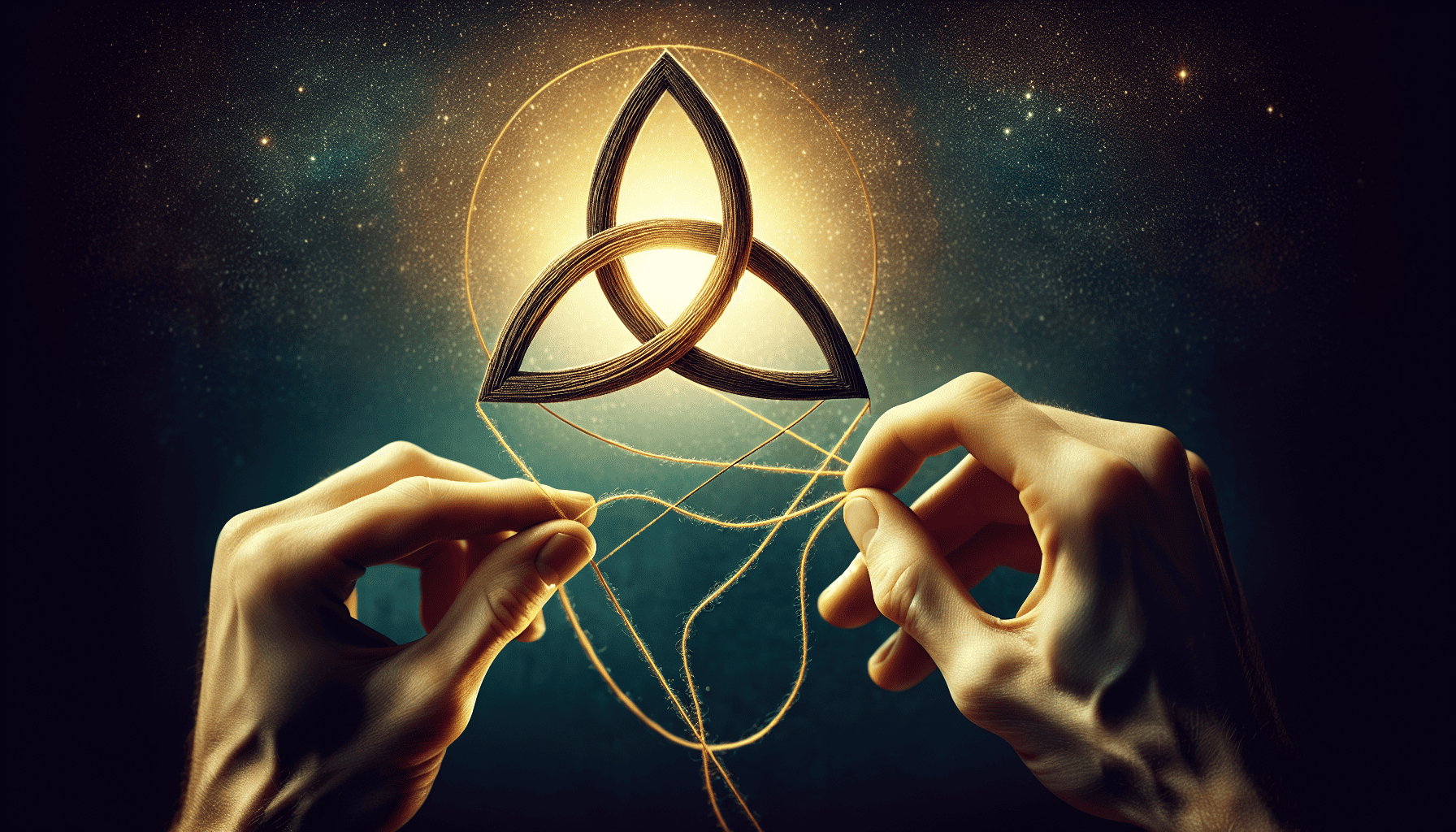
Creating a triquetra involves the following steps:
Start by drawing a circle, the size of which determines the size of the triquetra.
Use a compass to draw an equilateral triangle inside the circle.
Connect the three points of the triangle with curved lines to form the triquetra symbol.
This interlaced design symbolizes eternity and interconnectedness.
The weaving of the triquetra bears significant symbolic meanings, including:
Unity
Protection
The concept of a trinity
Eternity
The mystery of creation
Whether it’s crafted on paper, carved into wood, or etched into a piece of jewelry, the triquetra remains a powerful symbol of Celtic heritage.
Related Celtic Symbols
The triquetra is one among numerous enthralling Celtic symbols, each possessing its distinct history and meaning. Other significant Celtic symbols that hold importance similar to the triquetra include:
The Celtic Cross
The Trinity Knot
The Dara Knot
The Triskelion
The Triskelion is also a key symbol representing the unity of Earth, Water, and Fire.
Each of these symbols carries its unique significance. The Celtic Cross is an emblem from the Early Middle Ages that represents the fusion of Christianity and the concept of eternity, while the Awen symbol represents inspirational enlightenment through its depiction of three rays of light. Just like the triquetra, these symbols are deeply rooted in Celtic culture and continue to captivate people with their intricate designs and profound meanings.
Summary
The triquetra is a symbol that transcends time and culture. From its origins in ancient Celtic civilization to its adoption by Christian traditions and its modern revival in tattoos and jewelry, the triquetra continues to captivate people with its beauty and profound meanings. It symbolizes unity, protection, and eternity, representing the power of three in various cultures and religions.
Whether you’re drawn to the triquetra for its aesthetic appeal, its deep symbolic meanings, or its cultural heritage, there’s no denying the captivating allure of this ancient Celtic symbol. As we continue to explore and interpret the triquetra, we are reminded of the interconnectedness of life and the power of symbols in expressing our beliefs and values.
Frequently Asked Questions
Is the triquetra good luck?
Yes, the triquetra is considered to bring good luck and protection to those who wear it, according to its symbolism in Celtic culture.
What does the triquetra symbol protect?
The triquetra symbol is believed to create an unbreakable circle of protection and is associated with the physical, mental, and spiritual aspects, as well as the mother goddess and moon goddess.
What is the difference between a trinity and a triquetra?
The trinity knot represents the Father, the Son, and the Holy Spirit, while the triquetra symbolizes the three stages of life and has ties to the Maiden, Mother, and Crone.
Is the triquetra Scottish or Irish?
The triquetra is more closely associated with Irish culture, as it has been significant for Irish people, cultures, and belief systems for a long time. This is reflected in its use in popular Irish jewelry and its symbolism in Celtic paganism.
How is the triquetra used in modern times?
The triquetra is widely used in modern times, often seen in tattoos, body art, and jewelry, experiencing a revival.

